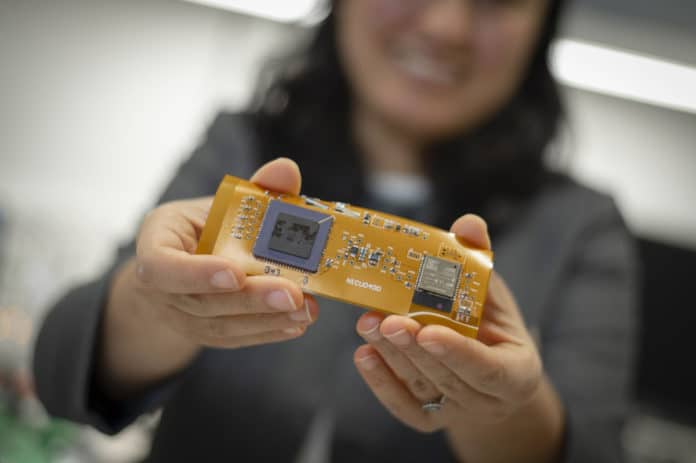Researchers at Worcester Polytechnic Institute (WPI) are developing a technology that would help monitor the oxygen levels in the infants without being separated from their families and connected to wires. The technology is a mobile, wearable sensor the size of a Band-Aid that wirelessly and non-invasively measures a baby’s blood oxygen levels, a vital indication of the lungs’ effectiveness and whether the baby’s tissue is receiving enough oxygen.
The research team, led by Associate Professor Ulkuhan Guler of Worcester Polytechnic Institute in Massachusetts, wants to enable sick, hospitalized babies to be untethered from wired sensors, so they can be examined more easily and frequently, held, and even allowed to go home. And hence, it has developed a miniature oxygen monitor for babies that is very flexible and stretchable, wireless, inexpensive, and mobile. This miniaturized wearable device measures blood gases diffusing through the skin and reports the data wirelessly.
Unlike current systems used in hospitals, this gas-based healthcare device will use wireless power transfer and will be connected to the Internet wirelessly, so an alarm on a monitor in a doctor’s office or smartphone app would notify someone if the baby’s oxygen level begins to drop. The device measures PO2, or the partial pressure of oxygen, which indicates a measure of oxygen dissolved in the blood. According to the team, measuring PO2 levels via a non-invasive device attached to the skin is as accurate as a blood test.
“Extended stays in the hospital are costly and can be a strain on families,” said Guler. “And studies have shown that babies’ health improves when they are with their families. Our goal with this affordable, mobile device is to give doctors more flexibility in monitoring their patients both in the hospital and at home.”
Along with some other associate professor and graduate students in electrical and computer engineering at WPI, Guler is working on creating a chip that will eventually act as the heart for the wearable device. The chip inside the wearable oxygen monitor will activate the optical sensors, capture analog signals from the sensor, handle power management, and contain required circuitry.
The technology is still under the prototyped stage. Guler also intends to modify it to be useful for adults, especially for people with severe asthma, and the elderly with chronic obstructive pulmonary disease. The device, with an associated smartphone app, would help these patients continually monitor their conditions.
